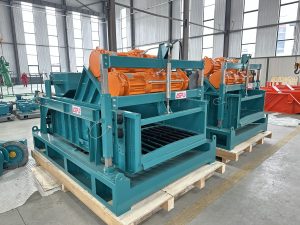In the previous article, we mentioned the common conditions and countermeasures of the motor during the use of the shale shaker as the first level solid control equipment of the solid control system.
Today, we will take you to understand the common problems and countermeasures of rotating shafts in the use of shale shaker.
Both motors fail to rotate
If both drive shafts fail to rotate, the issue could be due to bearing failure, a broken belt, or a slack belt. Here's a breakdown of each situation:
- Bearing failure: If the bearings in the drive shafts fail, they will need to be replaced. Faulty bearings can cause the shafts to become stiff or completely seize up, preventing rotation.
- Broken belt: If there is a broken belt, it will need to be replaced. A broken belt can cause the drive shafts to lose their connection, resulting in no rotation.
- Slack belt: If the belt is loose, it will need to be re-tensioned. A slack belt can cause insufficient power transfer, leading to the drive shafts not being able to rotate properly.
One drive shaft fails to rotate
If the problem is that one drive shaft fails to rotate, in addition to the three reasons for appeal, there may be damage to outrigger assembly, which needs to be check assy and replaced if necessary.
Bearing failure
When the bearing of the shale shaker fails, there are typically three primary reasons for the failure:
- Incorrect Grease: Using the wrong type of grease can cause bearing failure. It is important to use the recommended grease for lubricating the bearing. Different types of bearings require specific grease with appropriate characteristics.
- Grease System/Seal Failure: If the grease system or seal fails, it can lead to inadequate lubrication of the bearing. This can result in increased friction and wear on the bearing components. It is necessary to inspect the grease system and seals regularly to ensure they are functioning properly.
- Blocked Vent Hole: The bearing may fail if the head of the vent hole becomes blocked. The vent hole is designed to allow for the escape of excess pressure and prevent contaminants from entering the bearing. If the vent hole is blocked, it can cause pressure build-up and restrict proper lubrication flow. It is essential to keep the vent hole clear of any obstructions.
To prevent further damage and ensure proper function, we recommend addressing these possible reasons if the bearing of a shale shaker fails.
